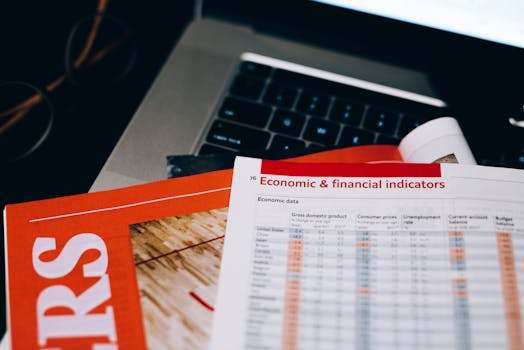Used Equipment Financing
As an Amazon Services LLC Associates Program participant, we earn advertising fees by linking to Amazon, at no extra cost to you.
Understanding Used Equipment Financing
Used equipment financing is a strategic option for businesses looking to grow without the burden of heavy debt. As someone who has navigated this path, I can say that it allows companies to acquire essential tools at a fraction of the price of new ones. This method of financing is particularly attractive for small to mid-sized businesses where cash flow is a constant concern.
Investing in used equipment can significantly reduce upfront costs while still enabling companies to maintain operational efficiency. It’s not merely about buying equipment; it’s about finding ways to boost productivity without straining capital. Historically, I’ve observed that companies often underestimate the quality and reliability of used machines. Many manufacturers and dealerships offer verified used equipment that meets rigorous standards, ensuring businesses do not sacrifice performance.
Another crucial aspect to consider is that used equipment financing can improve loan terms. As the asset depreciates, lenders may offer competitive interest rates, recognizing that these assets still hold substantial value. Ensuring the right financing structure can lead to a win-win scenario. I’ve seen how flexible repayment plans can adapt to a business’s cash flow cycles, which is essential for sustainability.
It’s essential to evaluate all available financing options. Traditional loans, leasing, and even vendor financing can all play roles in how businesses finance their equipment. I’ve found that vendors often have specific financing programs that can streamline the purchasing process. Moreover, working with a financial institution familiar with your industry can yield better options tailored to your needs.
Understanding the tax advantages is also a key factor in used equipment financing. Businesses can often deduct depreciation and interest costs, which can alleviate the overall financial burden, improving net income. This is where consulting with a financial advisor could yield significant benefits, ensuring that your approach is aligned with your broader financial strategy.
Ultimately, used equipment financing is about seizing opportunities while mitigating risks. Being proactive and informed about how these financial tools work can directly translate to improved operational capacity and increased profitability.
Capital equipment, including software, that will be used systemwide, or between and among U. T. institutions and System Administration, is eligible for RFS …
FSA loans can be used to purchase land, livestock, equipment, feed, seed, and supplies. Loans can also be used to construct buildings or make farm improvements.
The most current Census of Agriculture data is used in this calculation. Maximum Loan Limitations. The maximum loan amount for a "regular" Direct Farm Ownership …
Potential tax benefits associated with financing
Understanding financing options can lead to significant tax advantages that directly impact your financial strategy.
- Interest expense deductions: The interest you pay on certain financing options, such as loans, may be tax-deductible, lowering your taxable income significantly.
- Home mortgage interest deduction: If you finance your home through a mortgage, you can deduct interest on your primary residence, translating to substantial savings.
- Business expenses: Financing for business-related purchases allows for deductions on interest payments, potentially enhancing cash flow while reducing tax liability.
- Tax credits: Some financing options come with associated tax credits, such as those for renewable energy investments, which can reduce overall tax owed.
- Investment property depreciation: If you finance an investment property, your interest payments may be deductible, and you can also benefit from depreciation deductions over time.
- Capital gains implications: Properly financed investments may allow you to defer taxes on capital gains, aiding in wealth accumulation.
Steps to Secure Used Equipment Financing
Identify Your Equipment Needs: Start by evaluating the specific types of used equipment your business requires. Assess the condition, age, and functionality necessary for your operations. Knowing what you need prevents unnecessary spending.Determine Your Budget: Have a clear understanding of your financial capabilities. This involves setting an upper limit on what you are willing to spend, taking into account potential maintenance and future costs. A well-defined budget will guide your financing options.Research Financing Options: Explore different financing avenues available specifically for used equipment. This includes traditional bank loans, credit unions, leasing companies, and seller financing. Each option has unique terms and conditions. Don’t settle for the first offer you encounter. Comparison shopping could save you significant amounts.Evaluate Lender Requirements: Familiarize yourself with the requirements lenders expect for used equipment financing. This may include credit scores, financial statements, and a business plan. Being prepared will expedite the approval process.Gather Documentation: Collect necessary documents such as tax returns, bank statements, and equipment specifications. This documentation not only supports your application but also demonstrates to lenders your seriousness and preparedness. A well-prepared application stands a better chance of approval.Submit Your Application: Once everything is in order, submit your financing application. Be ready to answer any follow-up questions promptly. Maintaining open communication with the lender can strengthen your position. Timely responses signal your reliability.Review Financing Offers: Carefully evaluate any offers received. Pay attention to interest rates, repayment terms, and any hidden fees. Don’t hesitate to negotiate with lenders if possible. A second look can lead to better terms.Finalize the Agreement: Once you choose a financing option, review the contract thoroughly before signing. Ensure all terms align with what was discussed initially. A clear understanding of your obligations is crucial to avoid surprises.Make Your Purchase: After securing financing, proceed with purchasing the used equipment. Keep all purchase documents organized for future reference, especially if you need additional financing or provisions down the line. Effective record-keeping supports your financial health.
How to Choose the Right Equipment for Financing
Choosing the right equipment for financing can dramatically affect your financial strategy. I’ve found that assessing your needs against your financial goals is crucial. Begin by thoroughly evaluating what equipment is necessary for your operations or investments. Clearly define its purpose and the potential return on investment (ROI). This initial assessment is foundational. Next, research various financing options. Leasing, loans, and purchase agreements all serve different purposes and have unique implications on cash flow. I prefer exploring leases for equipment that may have a shorter lifespan or rapidly changing technology. This allows for lower initial costs and flexibility. On the other hand, purchasing equipment outright might be prudent for long-term investments, given the potential for resale value. Understand the total cost of ownership as well. It’s easy to focus solely on the initial price; however, maintenance costs, insurance, and upgrades should influence your decision. You must incorporate these elements into your overall budget. Assess your creditworthiness as well. Your financial history can significantly affect the terms of your financing options. Strong credit usually secures better rates, but I’ve noticed that some lenders are more accessible for those with less stellar credit if they have strong business plans or backup collateral. It’s vital to analyze the terms carefully—interest rates, repayment schedules, and hidden fees can vary widely between lenders. I recommend using a comparison tool or speaking with financial advisors before committing. These small details can save you a significant amount of money in the long run. Lastly, always consider scalability. If your business or personal needs may expand, should the equipment still be useful after that growth? Look for financing solutions that offer you the ability to upgrade or add additional equipment without excessive penalties. Flexibility in financing can be a true asset.
Key Considerations When Financing Used Equipment
Understanding the total cost of ownership is crucial. Financing used equipment involves more than just the purchase price. You need to account for maintenance, repairs, and insurance, which can add up significantly over time. Researching the specific equipment makes a big difference in anticipating these costs. Inspect the equipment thoroughly. Whether you’re buying a vehicle or machinery, having a professional check the equipment can save you from unexpected expenses down the road. I always recommend a detailed inspection to assess wear and tear, especially for older models. Explore multiple financing options. Traditional bank loans, vendor financing, and equipment leasing are all viable routes. Each has its pros and cons regarding interest rates, payment terms, and tax implications. I find vendor financing can be appealing due to potentially lower rates or favorable terms. Consider your cash flow. Ensure your financing choice aligns with your cash flow needs. It’s tempting to stretch payments for a larger piece of equipment, but if the payments can’t be comfortably managed, you may face cash constraints that hinder business growth. Pay attention to the residual value. Understand the estimated residual value of the equipment at the end of the financing term. This helps in evaluating if you should buy outright later or lease, allowing for a smoother transition if you choose to upgrade. Review your financing options regularly. Market conditions change, and so do rates and terms available for financing used equipment. I consistently evaluate my situation to take advantage of market improvements, keeping my financial strategy agile.
Common Pitfalls to Avoid
One major pitfall is not having a clear financial plan. Many people dive into investing or saving without a structured approach, which can lead to poor financial outcomes. Define your goals, whether it’s for retirement, a house, or education, and create a strategy to reach those goals.
Another frequent mistake is ignoring the importance of an emergency fund. Unexpected expenses arise, and if you don’t have savings set aside, you may resort to credit cards or loans that can lead to a cycle of debt. Aim for three to six months’ worth of living expenses in a separate, easily accessible account.
Failing to diversify your investments is a serious misstep. Relying too heavily on a single stock or asset class can expose you to unnecessary risk. Spreading your investments across various sectors can mitigate potential losses.
Not keeping an eye on fees is another easily overlooked issue. High management fees can erode your investment returns over time. Always scrutinize the costs associated with mutual funds, ETFs, and other investments to ensure you’re not overpaying for what you receive.
Additionally, many people often confuse revenue with profit. Understanding the difference is crucial when evaluating investments or businesses. Revenue is the total income generated, while profit is what remains after all expenses are subtracted. Focus on profitability for a clearer picture of true financial health.
Ignoring tax implications can also lead to financial trouble. Different investments are taxed differently, and not considering the tax burden can impact your overall returns. Consult with a tax advisor to align your financial decisions with your tax strategy.
Finally, emotional decision-making often sabotages financial success. Fear and greed can drive poor choices, like panic-selling during market dips or chasing trends without research. Stick to your plan and make decisions based on data, not emotions.
Types of Financing Options Available
Personal Loans are typically unsecured loans that can provide quick cash for various needs, such as debt consolidation or home renovations. The interest rates can vary significantly based on credit scores and lender policies. Be wary of high fees that can accompany some of these loans.
Credit Cards offer a revolving line of credit, which can be handy for both emergencies and everyday purchases. The catch is the high-interest rates if balances aren’t paid in full each month. I believe strategically using credit cards can also help build credit history, provided you manage your spending wisely.
Home Equity Loans allow homeowners to tap into their home’s equity for larger expenses, like home improvements or education costs. These are typically lower-interest loans because they are secured by the property. Just ensure you are comfortable with the additional mortgage debt you’re taking on.
Peer-to-Peer Lending has exploded in popularity, offering an alternative to traditional banking systems. You can borrow money directly from individuals through online platforms, often at lower rates. However, scrutinize the terms closely, as these can vary greatly.
Business Financing Options include traditional bank loans, small business administration (SBA) loans, and lines of credit. Personally, I find SBA loans often provide favorable terms, though they require extensive documentation and a solid business plan.
Crowdfunding for project funding can be a creative way to raise money without taking on debt. Platforms like Kickstarter or GoFundMe allow you to present your idea, but securing funding can be highly competitive. I’ve seen successful campaigns, but they require effective marketing and communication with potential backers.
Cash Advance on a credit card can offer quick access to funds but bear in mind that they come with steep fees and high-interest rates. I typically recommend resorting to these options as a last resort due to the costs involved.
Lastly, Grants and Scholarships can provide funds that do not need to be repaid, often aimed at education or specific projects. Researching and applying for these opportunities can take time, but the payoff can be significant.
Strategies for negotiating better terms
Effective strategies to secure advantageous financial terms.
- Do your homework: Research industry standards and typical terms to approach negotiations confidently.
- Communicate clearly: Articulate your needs and expectations succinctly to minimize misunderstandings.
- Seek win-win outcomes: Frame negotiations so both parties feel satisfied with the results.
- Be willing to walk away: Show that you’re prepared to exit the negotiation if terms aren’t favorable, empowering your stance.
- Listen actively: Pay attention to the other party’s concerns and adjust your approach accordingly to find common ground.
- Utilize silence: Pause during discussions to create discomfort and encourage the other party to fill the gap with better offers.
- Quantify your value: Clearly present how your value proposition justifies the terms you seek.
- Be patient: Don’t rush the process; building rapport can lead to better agreements over time.
AgDirect® is powered by Farm Credit – committed to serving agriculture and built from the ground up to finance ag equipment.
Would you prefer the European site? We think you might, as BakerCorp is now United Rentals throughout Europe. To learn more about our products or career …
We offer several options, including leasing and loans for used equipment, each structured to provide flexibility and affordability to our small business …
… used equipment financing. As a leading equipment finance company, we understand your reasons for wanting to buy used vehicles and machinery. We support your …
The Impact of Financing on Your Business’s Cash Flow
Financing can make or break your business’s cash flow. Whether you’re seeking loans, using credit lines, or inviting investors, each type of financing affects cash flow in distinct ways. For instance, loans can provide a significant cash influx, but they also mean monthly repayments that can strain cash flow if not managed well. Understanding the terms of any financing agreement is crucial. Interest rates, fees, and repayment schedules can vary dramatically; thus, favorable conditions can enhance cash flow, while unfavorable ones can hinder it.
Using credit lines can help manage seasonal fluctuations in cash flow, but they also come with risks. If not utilized wisely, your reliance on revolving credit can accumulate interest that compounds quickly, leading to cash flow challenges. The timing of those cash inflows and outflows is equally critical. If an influx doesn’t align with your receivables, you could face short-term liquidity issues.
Investment financing can be transformative. Infusing your business with capital through investors can accelerate growth and expansion. However, you may need to share profits and decision-making authority, impacting your control over cash. Your choice of financing method must align with your business goals to avoid potential cash flow disruptions.
Also, proactive cash flow management is vital. This includes monitoring your cash position regularly and forecasting future cash needs based on your financing arrangements. Establishing a reliable cash flow projection will inform you about when to expect cash inflows and outflows, giving you better control over your financial operations.
Ultimately, the type of financing you choose is key not just to immediate cash flow but also to the long-term financial health of your business. Consider factors such as your business cycle and growth plans when evaluating financing options. The choices you make today can significantly affect your cash flow tomorrow, so it’s essential to approach financing strategically.
Understanding Interest Rates and Terms
Interest rates play a crucial role in various financial products, whether you’re borrowing money or investing. They directly impact your costs and returns. When you take out a loan, for example, the interest rate determines how much you’ll pay over time. A higher interest rate means you’ll pay more in interest, which can significantly affect your overall debt.
Two main types of interest rates exist: fixed and variable. With a fixed interest rate, your rate remains the same throughout the life of the loan, providing you with stability and predictability. On the other hand, a variable rate can fluctuate based on market conditions, which might result in lower initial payments but poses the risk of increasing costs over time. Understanding these distinctions is essential when considering loans or mortgages.
In terms of investment, interest rates influence the returns you can expect. Higher interest rates generally lead to lower bond prices, meaning that as rates rise, existing bonds’ value diminishes. Conversely, stocks may benefit from lower rates, often leading to increased corporate profits as borrowing costs decrease. Staying informed about market trends related to interest rates can greatly enhance your investment strategy.
Additionally, the term associated with loans or investments is important. Short-term loans may offer lower interest rates but can lead to higher monthly payments over a shorter time span, while long-term loans usually spread the payments over many years, resulting in smaller payments but often higher overall costs due to accrued interest. Grasping these nuances can empower you to make smart financial moves.
Lastly, keep an eye on the central bank’s policies and economic indicators that influence interest rates. Decisions made by the Federal Reserve, for example, have a significant effect on the economy, impacting everything from mortgage rates to savings account yields. Being proactive in understanding these elements can lead you to make advantageous financial choices.
Trends in the Used Equipment Market
The used equipment market is currently experiencing significant shifts driven by economic factors, technological advancements, and changing consumer preferences. A noticeable trend is the increased demand for used equipment as businesses seek to conserve capital in a fluctuating economy. As new equipment prices soar, many companies turn to the secondary market for cost-effective alternatives.
Technology plays a vital role in this market transformation. Innovations in online platforms allow buyers to easily access vast inventories of used equipment, compare prices, and verify quality. This shift towards digital marketplaces streamlines the purchasing process, making it more efficient. More buyers are also utilizing auction sites and specialized platforms that facilitate quick and transparent transactions, ensuring more competitive pricing.
Moreover, sustainability concerns have propelled the growth of the used equipment market. Companies are increasingly aware of their environmental impact, leading to a preference for reconditioned or refurbished equipment. This trend not only reduces waste but also supports the circular economy, where equipment is reused and repurposed.
Another noteworthy trend is the rise of niche markets focusing on specific industries or types of equipment. This concentration allows buyers to find specialized machinery that meets their unique needs, whether in construction, agriculture, or manufacturing. As a result, we’re witnessing a diversification in the types of used equipment available.
Additionally, the pandemic has reshaped the market, leading to shifts in supply chains that affect availability. As new production slowed, many businesses turned to the used market to fill gaps. This situation has heightened the importance of thorough research and established trust in dealing with sellers.
Finally, financing options for used equipment purchases are becoming more accessible. Lenders see the potential in financing used machinery, which encourages more businesses to explore this avenue. Flexible financing arrangements can significantly alleviate the initial financial burden on companies.
Looking Ahead: The Future of Used Equipment Financing
The future of used equipment financing is poised for transformation. With the ongoing advancements in technology and the increasing demand for sustainability, businesses are looking to invest in high-quality used machinery that can deliver the performance needed without the hefty price tag attached to new equipment. This trend also reflects a larger consumer shift toward valuing cost-effectiveness and sustainability.
One of the key trends on the horizon is the growing role of technology in financing solutions. Online platforms are becoming mainstream, providing businesses with access to real-time data about equipment values and market trends. These platforms not only streamline the financing process but also enhance transparency. Companies can now evaluate their options based on detailed analytics, making it easier to assess the best financing paths available.
Another significant trend is the increase in lenders focusing on used equipment financing specifically. Financial institutions are recognizing the profitability and lower risk associated with financing used machinery, which tends to retain value longer than consumer goods. This shift is creating a more competitive environment that benefits borrowers.
Moreover, environmental concerns have catalyzed a preference for used equipment. As companies strive to meet their carbon footprint goals, financing used equipment becomes increasingly appealing. We can expect to see more financing options being marketed as environmentally friendly.
Lastly, the economic fluctuations could potentially influence the terms and conditions of used equipment financing. As businesses aim to manage cash flow more effectively during uncertain times, lenders might adjust their criteria to accommodate the rising demand for flexibility in payment terms. Understanding these shifts will be critical for businesses looking to leverage financing to maximize their operational capabilities.
Benefits of Financing Used Equipment
Financing used equipment can significantly reduce the initial financial burden on a business. When I think about the capability to acquire necessary tools without depleting cash reserves, it feels like a game changer. This method allows me to allocate funds to other vital operational aspects, reinforcing the overall financial health of my business.
Cost savings are crucial, particularly in competitive markets. Purchasing used equipment instead of new can result in substantial savings, and financing makes this option even more accessible. This approach also avoids the steep depreciation that new equipment faces, which means I can utilize my financial resources more effectively.
Another advantage is the flexibility financing offers. I can select terms that align with my cash flow, enabling me to budget more accurately. With manageable monthly payments, I maintain predictable expenses while still benefitting from high-quality equipment.
Financing used equipment can also provide tax advantages. Depending on local tax laws, the interest paid on financing could be tax-deductible, which lowers the effective cost of borrowing. Additionally, if the equipment is necessary for increasing productivity or revenue, the financial benefits can far outweigh the costs.
Having access to used equipment can also speed up operational readiness. Waiting for new equipment can lead to missed opportunities, whereas with used options readily available, I can quickly enhance my operational capabilities. This can be critical in industries where time-to-market is essential.
Lastly, financing used equipment can open the door to greater purchasing power. I can acquire more or better-quality items that position my business for growth without overwhelming my finances. With the right financing, I feel empowered to invest in opportunities I might have otherwise overlooked.
Advantages of financing vs. purchasing outright
Exploring the benefits of financing options over outright purchases.
- Cash Flow Management: Financing allows me to maintain liquidity for other essential expenses or investments.
- Access to Higher Value Items: I can afford more expensive items by spreading the cost over time, which outright purchasing may limit.
- Credit Score Improvement: Regular payments can build my credit history, positively impacting my credit score.
- Fixed Payment Structures: Financing often offers predictable monthly payments, making budgeting straightforward.
- Potential Tax Benefits: Certain financing options may allow me to deduct interest payments on my taxes, depending on the item financed.
- Promotional Offers: Many financing plans come with attractive introductory rates or deferred interest, making it easier to manage my expenses.
The Role of Credit in Financing Decisions
Credit is a fundamental component of financial decision-making. It influences how I approach investments, whether I think about making large purchases, or how I plan my savings strategy. The credit I have access to directly impacts the types of loans available, their interest rates, and ultimately, my overall financial health.
Having good credit can open doors for favorable financing options. When I maintain a strong credit score, lenders see me as a lower risk, allowing me to secure loans at lower interest rates. This means that for projects like buying a home or investing in a business, the cost of borrowing becomes significantly less, resulting in better long-term financial outcomes.
Understanding credit utilization is also crucial. Keeping my credit card balances low relative to their limits is a strategy I employ to ensure my credit score remains high. This not only boosts my credit score but also enhances my chances of securing the funding I need when I need it.
Moreover, credit can provide a safety net during financial emergencies. For example, when unexpected expenses arise, having access to credit can be a lifesaver. Utilizing credit in emergencies allows me to maintain my cash flow while I address immediate financial needs.
Nevertheless, I am always cautious about accumulating debt. Mismanaging credit can lead to excessive debt, which creates financial strain and affects my overall wealth-building strategy. It’s important for me to regularly review my credit reports to ensure accuracy and to identify any areas for improvement.
Lastly, I’ve learned that credit not only impacts personal finance but also affects business financing decisions. Business credit scores play an essential role in how companies obtain necessary funding. As an entrepreneur, I ensure to separate my personal and business credit to help build a solid foundation for my business financing needs.
In summary, my financial journey is significantly influenced by how I manage my credit. Whether I’m looking at big purchases or day-to-day expenses, the health of my credit directly shapes my financing opportunities and financial potential.
What is used equipment financing?
Used equipment financing allows businesses to acquire pre-owned machinery and tools without the substantial upfront costs associated with new equipment. This type of financing often includes loans or leases that are specifically structured for second-hand assets, wherein the value of the equipment plays a critical role in determining the terms and conditions. Typically, lenders assess the age, condition, and overall market value of the equipment when issuing financing.
Utilizing used equipment financing can significantly enhance cash flow, enabling businesses to allocate resources to other essential areas. Moreover, financing used equipment often entails lower monthly payments when compared to new alternatives. This option appeals especially to startups and small enterprises that may face tight budgets yet need reliable equipment to operate effectively.
Ultimately, exploring used equipment financing is a smart strategy that can bolster operational capacity while minimizing financial strain.
How do I qualify for used equipment financing?
Qualifying for used equipment financing typically involves a few key criteria that I find crucial. First, your credit score plays a significant role. Lenders often require a score of at least 650, although some may approve lower scores depending on other factors. Next, your business’s financial health is scrutinized. They will look into your revenue, profit margins, and overall cash flow. A well-prepared financial statement can bolster your application. Additionally, lenders will assess the age and condition of the equipment you wish to finance. It’s advisable to select equipment that’s not too old, as this ensures better collateral for the loan. Furthermore, demonstrating a clear business plan that outlines how the equipment will enhance your operations can be beneficial. Lastly, having a down payment ready—typically 10% to 20%—can strengthen your position significantly. I recommend evaluating these aspects thoroughly before applying to increase your chances of securing financing.
What types of equipment can be financed?
A wide variety of equipment can be financed. This includes heavy machinery, commercial vehicles, office equipment, medical equipment, and technology hardware. Construction companies often finance excavators and bulldozers, while manufacturers might seek funding for production machinery.
Businesses in the healthcare sector frequently finance MRI machines and surgical equipment. Restaurants commonly finance kitchen equipment like ovens and refrigerators. Even IT firms can finance software solutions and cloud infrastructure.
Financing options vary based on the equipment’s type, usage, and the financing institution. New equipment generally garners better financing terms than used equipment, as lenders see it as lower risk. Understanding what types of equipment you can finance is crucial for strategic growth and efficient capital management.
What are the typical terms of used equipment financing?
The terms of used equipment financing can vary significantly, but generally include several key factors that you should understand. Loan amounts typically range from 70% to 100% of the equipment’s appraised value. The typical repayment period is between two to five years, but terms can extend up to seven years depending on the lender. Interest rates for used equipment financing usually fall between 4% and 10%, influenced by factors like the borrower’s credit score and the age of the equipment. Furthermore, some lenders offer flexible payment options, allowing monthly, quarterly, or seasonal payments that align with your cash flow.
Additionally, be aware of any fees associated with the financing, including origination fees or maintenance costs. A down payment may be required, often between 10% and 20% of the total cost. Overall, understanding these aspects empowers you to choose financing that best fits your budget and operational needs.
How does financing affect my business cash flow?
Financing directly influences my cash flow by altering the available liquidity for operating expenses. When I take on debt, such as loans or credit lines, I gain immediate access to capital, enhancing my ability to invest in growth opportunities or cover short-term expenses. However, this also means I have to account for monthly repayments, which can strain cash flow if not properly managed. On the other hand, equity financing can improve cash flow since I won’t face compulsory repayments. Yet, it often dilutes my ownership. The balance between debt and equity financing is crucial; too much debt can lead to cash shortages during downturns, while insufficient investment capital can stunt growth. Ultimately, financing choices should align with my business strategy and anticipated cash inflows. Regularly reviewing cash flow forecasts helps me anticipate the financial impact of each financing option, ensuring sustainable growth and operational stability.
Are there tax benefits associated with financing used equipment?
Financing used equipment can indeed offer significant tax benefits. One major advantage is the ability to deduct interest payments on the financing from your taxable income. This means the costs associated with acquiring that equipment can be partially offset by these deductions, reducing your overall tax burden. Additionally, Section 179 allows businesses to deduct the full purchase price of qualifying equipment purchased or financed during the tax year. While this deduction is available for new and used equipment alike, there are specific limits and eligibility criteria to be mindful of. Moreover, depreciation plays a vital role in tax benefits when financing used equipment. By accurately accounting for depreciation over the equipment’s useful life, you can further reduce taxable income year after year. Taking advantage of these benefits requires careful planning and understanding of tax codes, so I recommend consulting with a tax professional for personalized advice regarding your specific situation.
Used equipment financing can significantly enhance business liquidity. By obtaining necessary machinery without substantial upfront costs, I can allocate capital to other vital areas like operations or marketing. This flexibility is crucial as it allows my business to respond swiftly to market demands and opportunities, maximizing growth potential.
Researching financing options can uncover better deals. I’ve seen firsthand how a bit of exploration can lead to significantly lower interest rates, hidden fees, or even promotional offers that can save hundreds. Don’t settle for the first option; take the time to compare and negotiate terms that suit your financial needs.
**Recognizing market trends is essential to my investment choices.** By observing fluctuations and patterns, I can identify promising sectors and avoid potential pitfalls. **Effective timing and strategic assets become clearer when I’m tuned into market behavior.** This insight empowers me to enhance my portfolio’s performance and adapt as conditions change.
Having a strong credit score significantly enhances your borrowing power. **It means you’re less of a risk to lenders**, which translates to **lower interest rates on loans and credit**. This can save you substantial money over time, whether for a mortgage, auto loan, or credit card. **Good credit can unlock opportunities for greater savings.**
Evaluating the condition of equipment is essential before committing to any financing. Understanding its operational status and potential repair costs protects you from unexpected expenses and ensures that your investment remains sound. Skipping this step can lead to financial setbacks that are difficult to recover from.
Financing used equipment can significantly ease cash flow pressure. By opting for used assets, I can maintain operational efficiency while investing less capital upfront. This approach allows me to allocate funds to other critical areas, driving growth without overwhelming debt. Moreover, used equipment often comes with lower depreciation rates, making it a smart long-term financial strategy.
**Thorough research is non-negotiable.** Ignoring important details can lead to costly mistakes in investing or budgeting. I’ve seen firsthand how a lack of research can result in poor choices. **Always analyze market trends and gather reliable information before making financial decisions.** This approach not only safeguards your capital but also maximizes potential gains.
Consulting financial experts can provide insights that address your unique situation. **I’ve found that expert advice helps me understand complex financial products and strategies better.** They can customize recommendations based on my goals and risk tolerance, making a significant difference in my financial journey.
As an Amazon Services LLC Associates Program participant, we earn advertising fees by linking to Amazon, at no extra cost to you.












